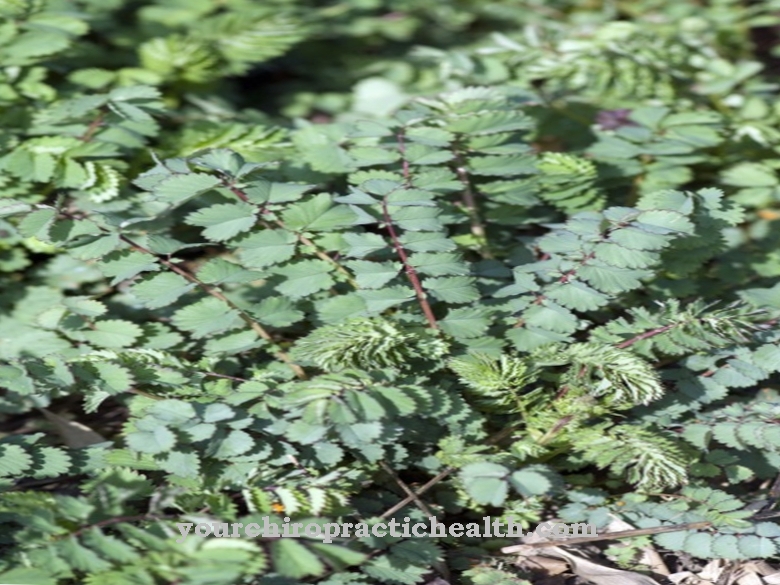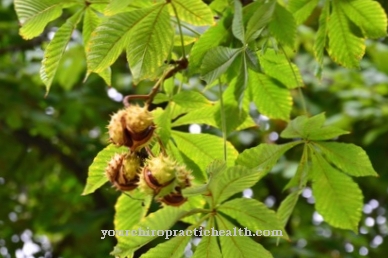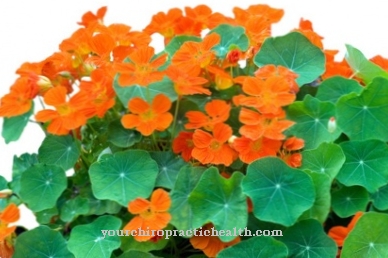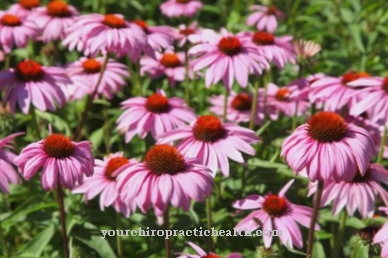Occurrence & cultivation of the upright glass herb

At the Upright glass herb it is a perennial, herbaceous plant that reaches a height of 30 to 100 centimeters. In contrast to the common nettle in Germany, the glass herb has no stinging hairs and leaves with a smooth edge. These are arranged alternately, and the blade is elongated with about 10 to 15 centimeters.
The plant is mostly dioecious, that is, dioeciously separated sexes. Male, female and hermaphrodite flowers are formed. The inflorescences are dense, spherical in the leaf corners. The calyx-like bracts are free to the bottom. The flowers are four-fold and the stamens rise up when they open. The fruit is a 1.5 to 2 millimeter small, black, shiny nut. The plant blooms from June to September.
The upright glass herb can be found sporadically in all of Central Europe, on ruins, fences, on rubble, in gravel pits and also on rather damp bushes such as in vegetable gardens and vineyards. The plant is particularly found in the Mediterranean region. The plant bears its name because of its occurrence in crevices of walls Parietaria. Paries, parietis comes from Latin and means "wind". The German name Glaskraut comes from the fact that the plant was previously used to clean glasses.Effect & application
The plant has been little studied in terms of ingredients and mode of action. According to older information, it should contain a lot of potassium nitrate, bitter substances, sulfur, tannins, flavonoids, caffeic acid derivatives and a flavonol-3-diglycoside. This combination of ingredients is responsible for the effect and ensures that the plant is used as a diuretic and wound healing agent. All the dried herb is used.
It is added to tea mixtures and ready-to-use preparations, especially because of the diuretic effect. Tea cures with the upright glass herb support healthy kidney function and help with rheumatism and gynecological problems. The Dutch doctor Boehaave once made a particularly interesting observation with Parietaria: a young female dog was always looking for glass herb in nature and consumed the plant in large quantities. But when she was locked up in the apartment, she died.
When her body was examined, it found large amounts of stones in the urinary bladder. Boerhaave concluded that the plant must be of great use in kidney stones. However, there are no actual studies that substantiate these findings. Nevertheless, the upright glass herb is used in homeopathy for the diseases mentioned.
The plant can also be eaten raw or cooked in meals. Regarding the presence of micronutrients, i.e. vitamins, minerals and trace elements, no statements can be made, as there are hardly any studies on this. Otherwise, the upright glass herb is not particularly important as a medicinal plant because of the insufficient information on the substances it contains and their pharmacological effects.
In our latitudes, the related representative Urtica Dioica is mostly used. It is more common in German-speaking countries and its ingredients and effects have been better researched. This representative is also mainly used because of the diuretic and effect and for rheumatic complaints.
Importance for health, treatment & prevention
The upright glass herb is rarely used in herbal medicine, but it is said to have a diuretic effect. It strengthens the urinary organs and can be used against their inflammation. The plant can provide relief for kidney weakness, inflammation of the kidneys, cystitis, abdominal diseases and gout.
The upright glass herb is often used for cold symptoms such as runny nose, coughing and wheezing because of its expectorant effect. The glass herb is also used for constipation. The plant is of particular importance to women: it cleanses the uterus, promotes menstruation and is said to facilitate childbirth.
Cosmetics also make use of the upright glass herb. Applied externally, it is said to bleach freckles and clear the skin. The glass herb is also said to have been used successfully for impetigo, a very contagious bacterial infection.
The glass herb is used very often for wounds. It relieves pain, cleanses the skin, staples wounds and thus promotes wound healing. The pus is driven and wound healing is promoted. In homeopathy, the glass herb is used for kidney stones and nightmares - when the patient dreams of being buried alive.
The recommended dosage is a tincture up to the third power, which in homeopathic conditions is still a relatively low dilution. In Poland's homeopathy, the glass herb is used as a blood purifier and in Hungary it is used in homeopathic dilutions against red rash.
The green parts of the upright glass cabbage can also be eaten - either raw or shortly cooked. The leaves can be added to salads or vegetable dishes. In this way, the herb can be incorporated into the daily diet and thus used preventively against the complaints mentioned. This is particularly recommended for people with poor kidney function and rheumatism.
In this context, the related representative Urtica Dioica should be mentioned again, whose effects are very similar to the upright glass herb. This plant can also be incorporated into the diet and it is also more common in Germany.

























.jpg)


